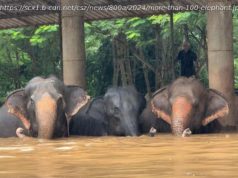A team of astronomers has identified a temperate exoplanet as a promising super-Earth ice or water world.
A team of astronomers has identified a temperate exoplanet as a promising super-Earth ice or water world.
The findings, led by Université de Montréal, show that the habitable zone exoplanet, LHS 1140 b, is not likely a mini-Neptune, a small so-called gas giant—large planets composed mostly of gas—with a thick hydrogen-rich atmosphere. The planet, located about 48 light-years away in the constellation Cetus, emerges as one of the most promising habitable zone exoplanet candidates known, potentially harboring an atmosphere and even a liquid water ocean.
Data from the James Webb Space Telescope (JWST) were collected in December 2023 and added to previous data from other space telescopes Spitzer, Hubble, and TESS to solidify this result, accepted for publication in The Astrophysical Journal Letters this week and currently available on the arXiv preprint server.
« This is the first time we have ever seen a hint of an atmosphere on a habitable zone rocky or ice-rich exoplanet. Detecting atmospheres on small, rocky worlds is a major goal for JWST, but these signals are much harder to see than for giant planet atmospheres », said Ryan MacDonald, NASA Sagan Fellow in the U-M Department of Astronomy, who was key in the analysis of LHS 1140 b’s atmosphere.
« LHS 1140 b is one of the best small exoplanets in the habitable zone capable of supporting a thick atmosphere, and we might just have found evidence of air on this world. »
LHS 1140 b, an exoplanet orbiting a low-mass red dwarf star roughly one-fifth the size of the sun, has captivated scientists due to it being one of the closest exoplanets to the solar system that lies within its star’s habitable zone.
Home
United States
USA — IT Astronomers find surprising ice world in the habitable zone with JWST data






